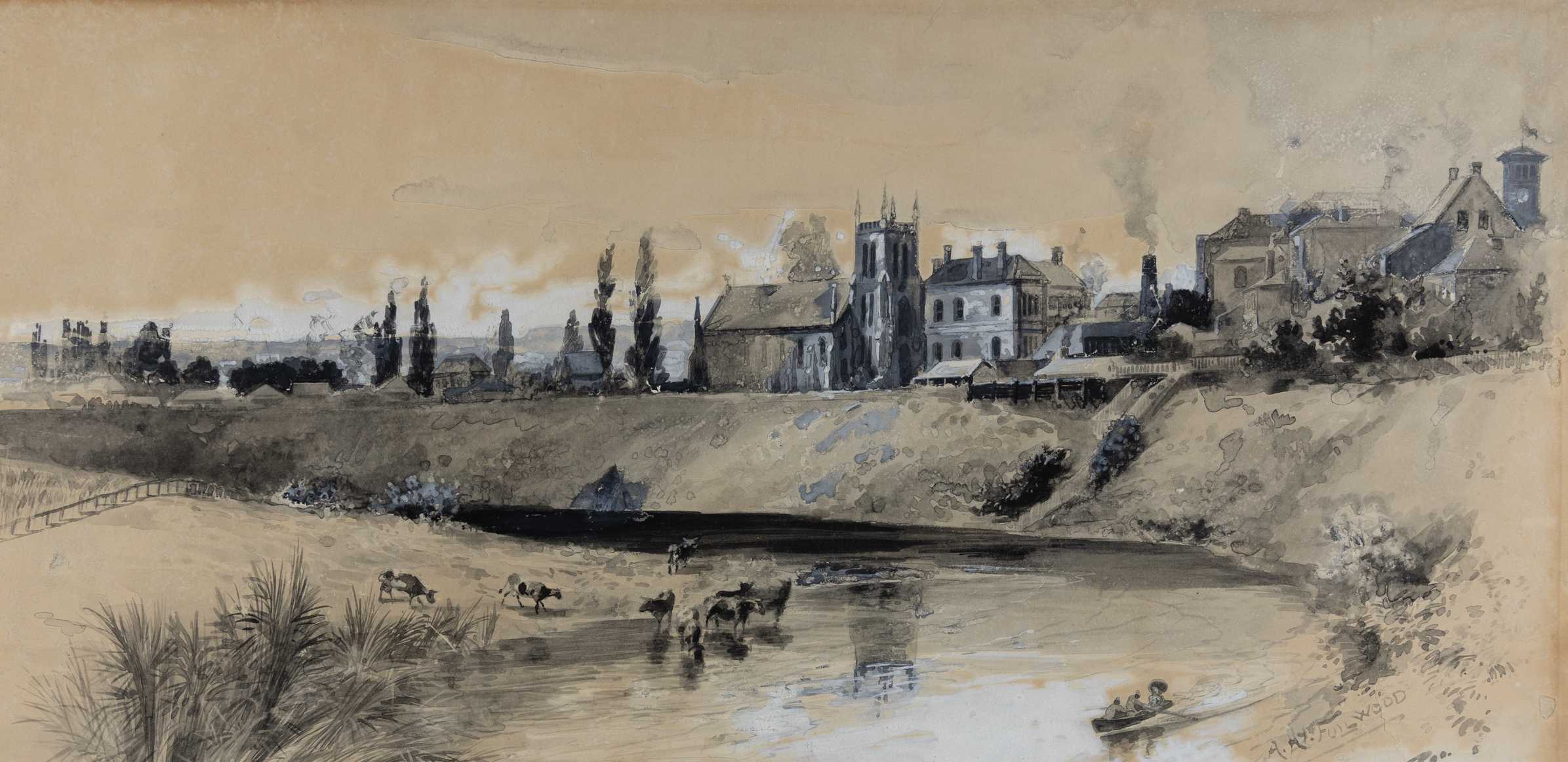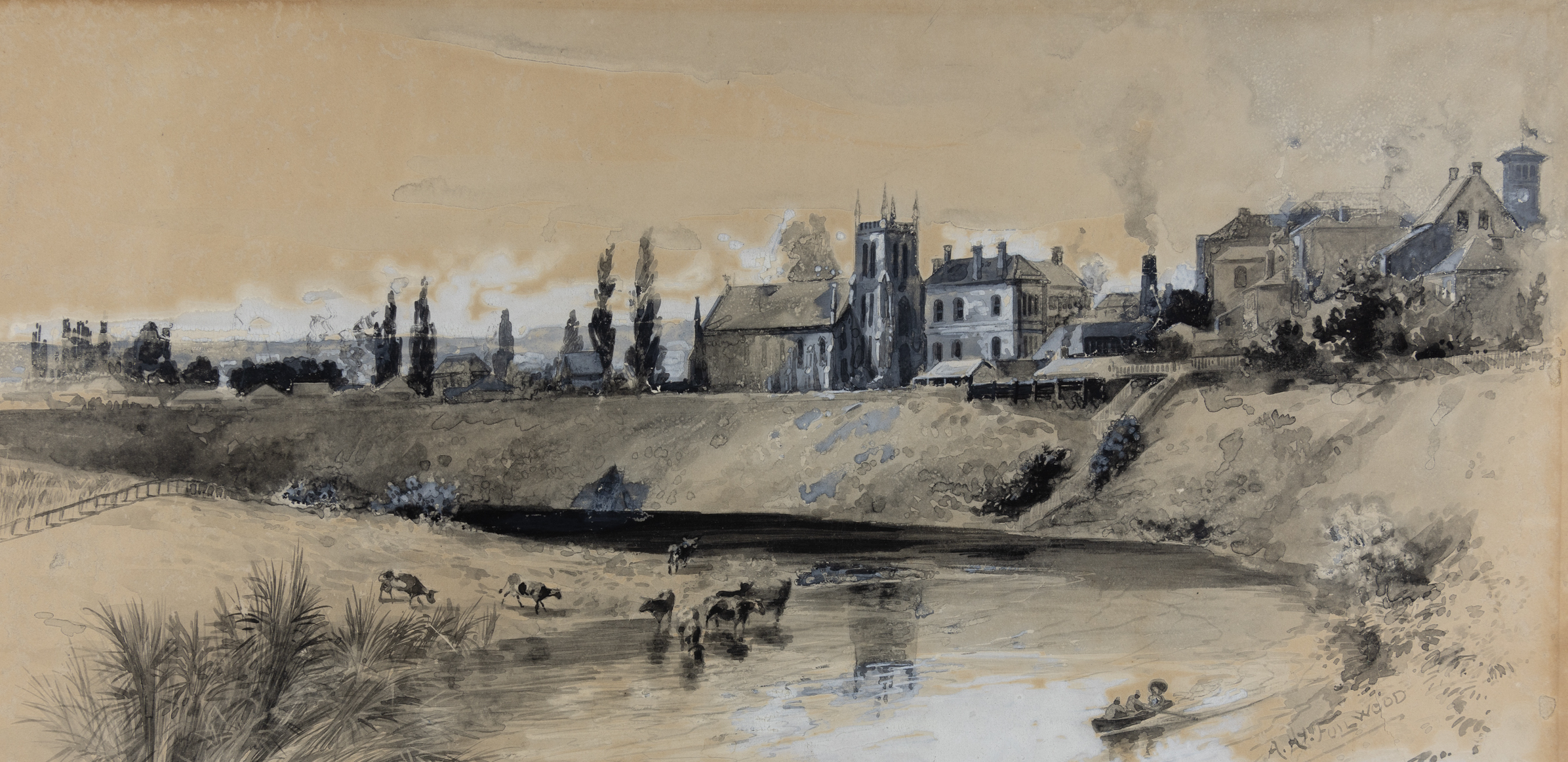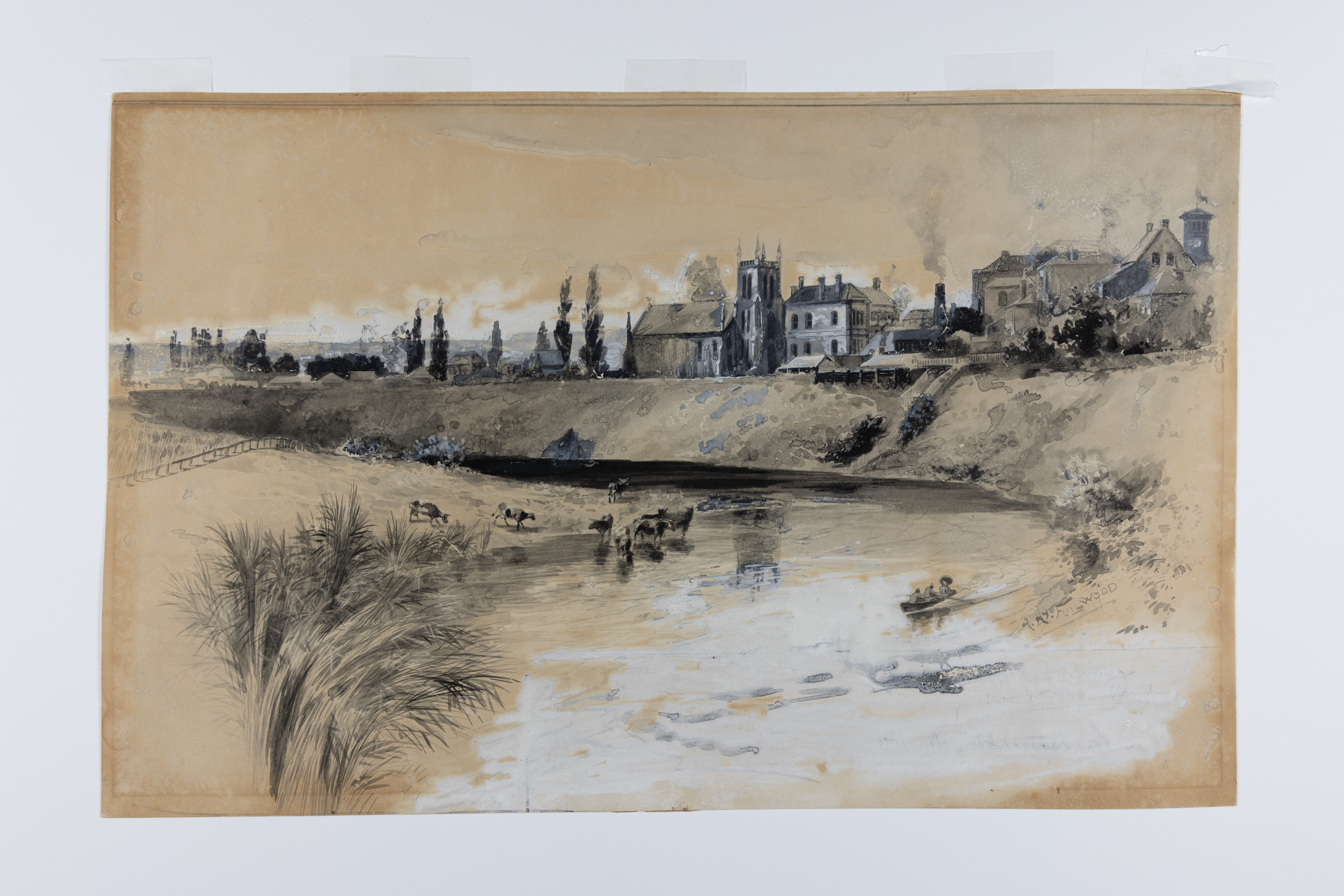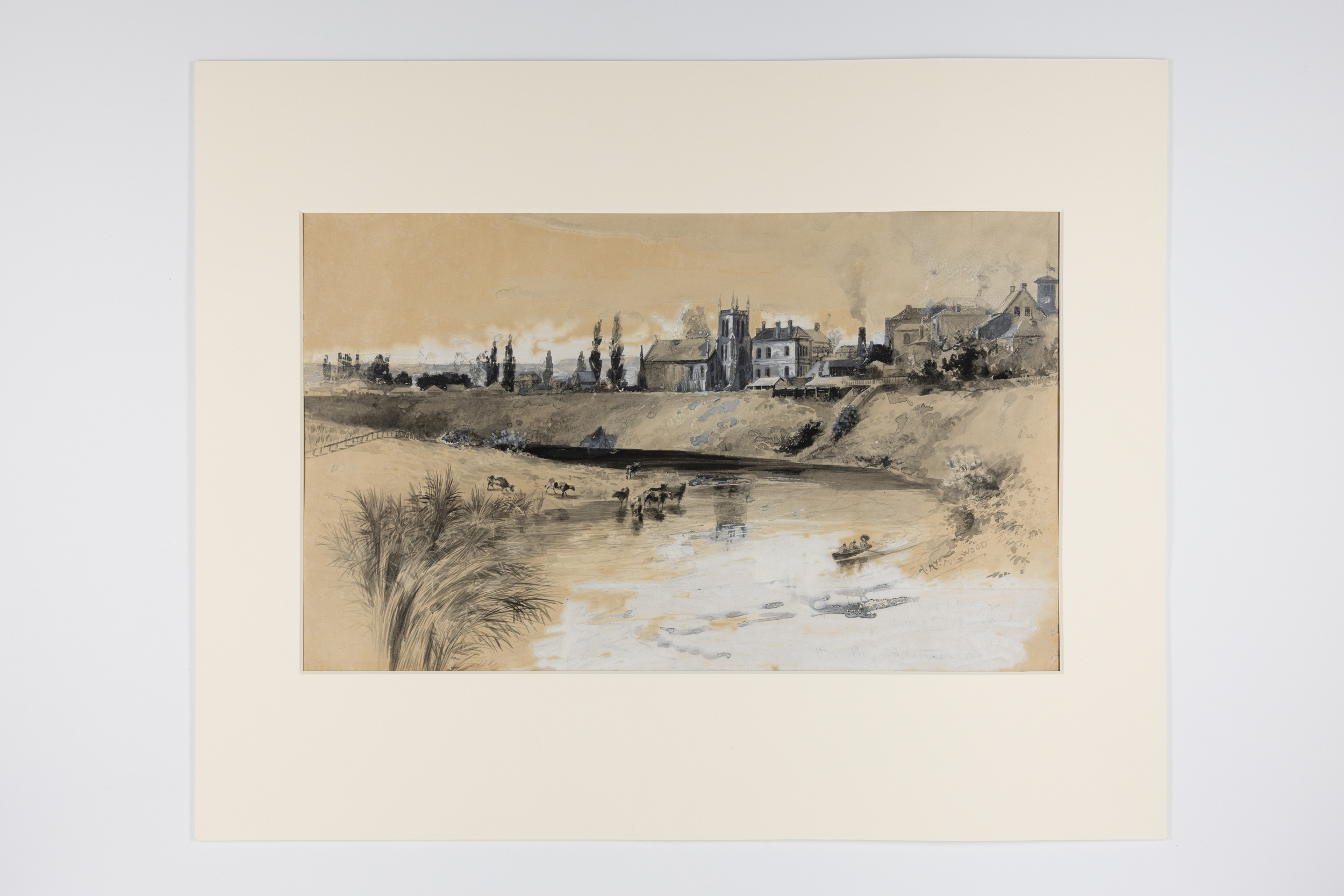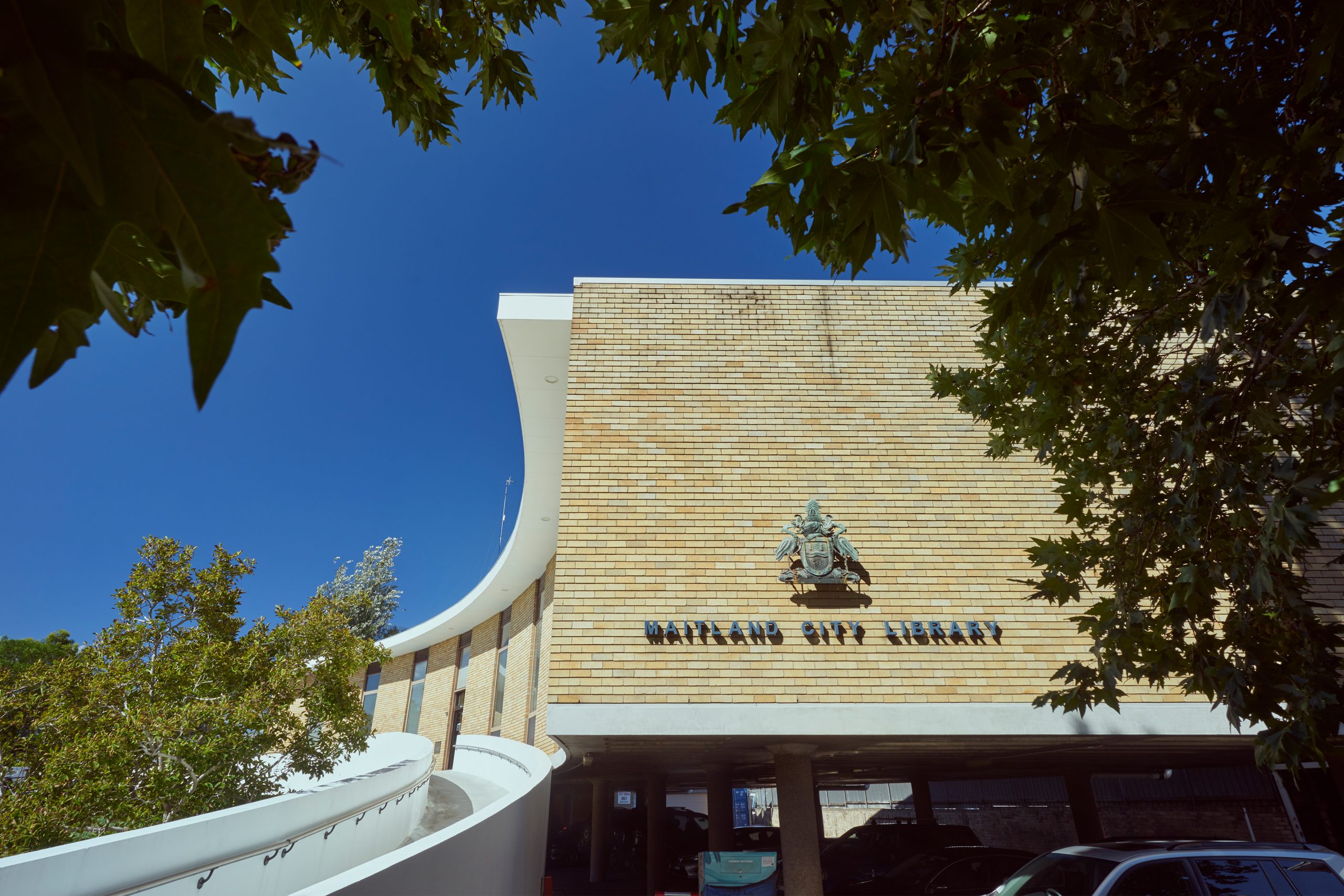A Reproduced Idyll
Fullwood’s Impression of the Hunter at West Maitland
When the young Birmingham artist Arthur Henry Fullwood (1863-1930) arrived in Maitland in 1886, what were his first impressions? Having recently migrated to the colony, Fullwood was commissioned by the Picturesque Atlas Publishing Company in Sydney to travel to the Hunter Region and depict its principal town, Maitland.
Among the various locations Fullwood visited in Maitland’s two townships was a spot on the northern bank of the Hunter River, where it winds through West Maitland. Gazing across to St John’s Cathedral and the Bishop’s House, and watching the cattle drinking at the water’s edge, Fullwood probably sat down on the grass, opened his notebook, dipped his pen into his inkbottle and began sketching out the scene. He also recorded his impressions with words, noting how Maitland was ‘indeed like England – I never saw finer willow trees’.
Back in his Sydney studio, Fullwood used the sketch to create this painting in watercolour and opaque white goache. Then, after the scene was reproduced once again, as a wood engraving, it was printed in the topography section of volume 1 of the Picturesque Atlas of Australasia.
Fullwood later worked as a commercial illustrator, forging friendships with other Impressionist artists who depicted the beauty of the Australian landscape, including Tom Roberts and Arthur Streeton, and recorded the horrors of the battlefront as an official artist during World War I.
As the name suggests, the Picturesque Atlas of Australasia (1886-1889) captured idyllic views of Australia, promoting images of natural beauty and progress, and shaping perceptions of colonial society in Britain. Its 42 supplements, which attracted 50,000 subscribers, have been credited with inspiring the birth and development of Australian art.


